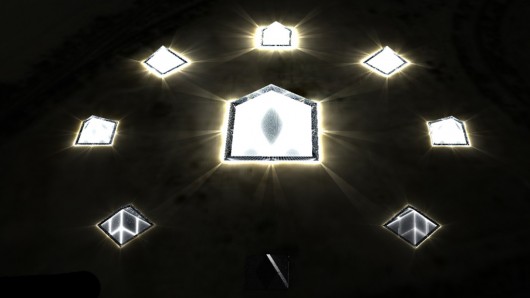The Land Art Generator Initiative (LAGI) is a competition that challenges entrants to think outside the box to create functional yet beautiful renewable energy generation facilities.
First prize has just been awarded to such a submission, but this one thinks outside the pyramid. The Lunar Cubit concept design consists of nine pyramids made from solar panels in a configuration modeled on the Great Pyramid of Cheops in Giza. The pyramids would not only be capable of providing electricity to 250 homes, but are also designed to serve as a lunar calendar.
Lunar Cubit, which took first place over Atelier DNA’s Windstalk concept, sees eight smaller pyramids encircling a larger central pyramid. The pyramids and their layout are scaled proportionally to the Great Pyramid of Cheops using the royal cubit – the earliest attested standard measure that was used in building the pyramids. They would be made from glass and amorphous silicon to give them the appearance of onyx polished to a mirror finish.
During the day, all nine pyramids would form a 1.74 MW utility-scale power plant and soak up energy from the sun using frameless solar panels. Energy from the smaller pyramids would be transferred to the central pyramid via underground cables where it would be converted to AC electricity and transmitted to the utility grid.
At night, energy efficient LEDs built into the pyramids would light up according to the phases of the moon. The central pyramid is lit to inversely reflect the lunar cycle – at the new moon it is at full illumination, while at the full moon the LEDs are off altogether relying solely on the moon for lighting. Meanwhile, the eight surrounding pyramids light up – again inversely – to mark the lunar phase like the face of a clock.
Its creators, Robert Flottemesch, Adrian DeLuca, Johanna Ballhaus and Jen DeNike, designed the project to be constructed 3 miles from Abu Dhabi international airport so that it would be visible from the air and create an instantly recognizable landmark.








